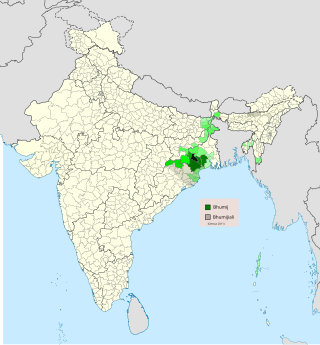
The Munda languages are a group of closely related languages spoken by about nine million people in India, Bangladesh and Nepal. Historically, they have been called the Kolarian languages. They constitute a branch of the Austroasiatic language family, which means they are more distantly related to languages such as the Mon and Khmer languages, to Vietnamese, as well as to minority languages in Thailand and Laos and the minority Mangic languages of South China. Bhumij, Ho, Mundari, and Santali are notable Munda languages.

Santali, also known as Santal or Santhali, is the most widely-spoken language of the Munda subfamily of the Austroasiatic languages, related to Ho and Mundari, spoken mainly in the Indian states of Assam, Bihar, Jharkhand, Mizoram, Odisha, Tripura and West Bengal by Santals. It is a recognised regional language of India as per the Eighth Schedule of the Indian Constitution. It is spoken by around 7.6 million people in India, Bangladesh, Bhutan and Nepal, making it the third most-spoken Austroasiatic language after Vietnamese and Khmer.
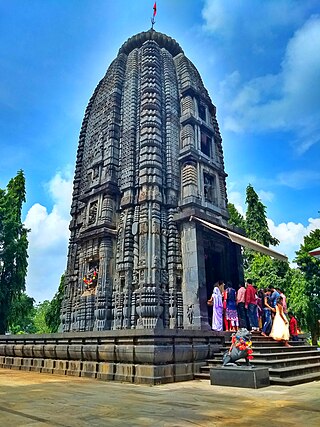
Mayurbhanj district is one of the 30 districts in the Odisha state of eastern India and the largest district in Odisha by area. The district's headquarters is located in Baripada, with other major towns including Rairangpur, Karanjia, and Bahalda. As of 2011, Mayurbhanj ranks as the third-most populous district in Odisha, following Ganjam and Cuttack.
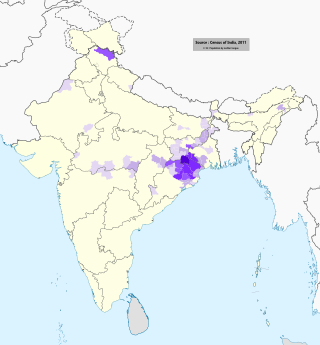
Ho is a Munda language of the Austroasiatic language family spoken primarily in India by about 2.2 million people per the 2001 census. It is spoken by the Ho, Munda, Kolha and Kol tribal communities of Jharkhand, Odisha, West Bengal and Assam and is written using Warang Citi script. Devanagari, Latin and Odia script are also used, although native speakers are said to prefer Warang Chiti, invented by Lako Bodra.

West Singhbhum or Pashchimi Singhbhum is one of the 24 districts of Jharkhand state, India. It came into existence on 16 January 1990, when the old Singhbhum district was bifurcated. Chaibasa is the district headquarters.

The Munda people are an Austroasiatic-speaking ethnic group of the Indian subcontinent. They speak Mundari as their native language, which belongs to the Munda subgroup of Austroasiatic languages. The Munda are found mainly concentrated in the south and East Chhotanagpur Plateau region of Jharkhand, Odisha and West Bengal. The Munda also reside in adjacent areas of Madhya Pradesh as well as in portions of Bangladesh, Nepal, and the state of Tripura. They are one of India's largest scheduled tribes. Munda people in Tripura are also known as Mura. In the Kolhan region of Jharkhand the Munda people are often called Tamadia by other communities.

The Kharia are an Austroasiatic tribal ethnic group from east-central India. They originally speak the Kharia language, which belong to Austroasiatic languages. They are sub-divided into three groups known as the Hill Kharia, Delki Kharia and the Dudh Kharia. Amongst them, the Dudh Kharia is the most educated community.

Kurukh, also Kurux, Oraon or Uranw, is a North Dravidian language spoken by the Kurukh (Oraon) and Kisan people of East India. It is spoken by about two million people in the Indian states of Jharkhand, Chhattisgarh, Odisha, West Bengal, Assam, Bihar and Tripura, as well as by 65,000 in northern Bangladesh, 28,600 of a dialect called Uranw in Nepal and about 5,000 in Bhutan. The most closely related language to Kurukh is Malto; together with Brahui, all three languages form the North Dravidian branch of the Dravidian language family. It is marked as being in a "vulnerable" state in UNESCO's list of endangered languages. The Kisan dialect has 206,100 speakers as of 2011.
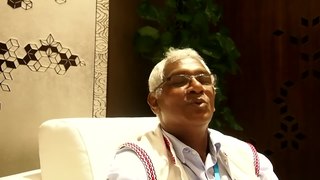
The Kharia language is a Munda language of the Austroasiatic language family, that is primarily spoken by the Kharia people of eastern India.

Nagpuri is an Indo-Aryan language spoken in the Indian states of Jharkhand, Chhattisgarh, Odisha and Bihar. It is primarily spoken in the west and central Chota Nagpur plateau region. It is sometimes considered a dialect of Bhojpuri.
The Juang language is a Munda language of the Austroasiatic language family spoken primarily by the Juang people of Odisha state, eastern India.
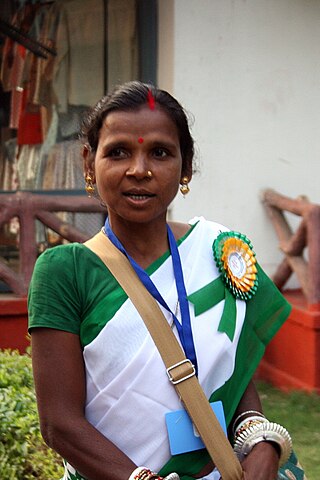
The Ho people are an Austroasiatic Munda ethnic group of India. They are mostly concentrated in the Kolhan region of Jharkhand and northern Odisha where they constitute around 10.7% and 7.3% of the total Scheduled Tribe population respectively, as of 2011. With a population of approximately 700,000 in the state in 2001, the Ho are the fourth most numerous Scheduled tribe in Jharkhand after the Santals, Kurukhs, and Mundas. Ho also inhabit adjacent areas in the neighbouring states of Odisha, West Bengal and Bihar bringing the total to 806,921 as of 2001. They also live in Bangladesh and Nepal.
Mundari (Munɖari) is a Munda language of the Austroasiatic language family spoken by the Munda tribes in eastern Indian states of Jharkhand, Odisha and West Bengal and northern Rangpur Division of Bangladesh. It is closely related to Santali. Mundari Bani, a script specifically to write Mundari, was invented by Rohidas Singh Nag. It has also been written in the Devanagari, Odia, Bengali, and Latin writing systems.
Birhor are a tribal/Adivasi forest people, traditionally nomadic, living primarily in the Indian state of Jharkhand. They speak the Birhor language, which belongs to the Munda group of languages of the Austroasiatic language family.
Bhumij is a Munda ethnic group of India. They primarily live in the Indian states of West Bengal, Odisha, Assam and Jharkhand, mostly in the old Singhbhum district and also in states like Bihar and Assam. There is also a sizeable population found in Bangladesh. Bhumijas speak the Bhumij language, an Austroasiatic language, and use Ol Onal script for writing.

Kurmali or Kudmali is an Indo-Aryan language classified as belonging to the Bihari group of languages spoken in eastern India. As a trade dialect, it is also known as Panchpargania, for the "five parganas" of the region it covers in Jharkhand. Kurmali language is spoken by around 550,000 people mainly in fringe regions of Jharkhand, Odisha and West Bengal, also a sizeable population speak Kurmali in Assam tea valleys. Kurmali is one of the demanded languages for enlisting in Eighth Schedule to the Constitution of India.
Turi is an endangered Munda language of India that is closely related to Mundari. It is spoken by only half a percent of ethnic Turi, the rest having shifted to Sadri in Jharkhand, Mundari in West Bengal, and Odia in Odisha. The Turi are classified as a Scheduled Caste in Jharkhand.
Koda, also known as Kora, Kaora, Korali, Korati, Kore, Mudi, or Mudikora, is an endangered Munda language of India and Bangladesh spoken by the Kora. The Kora mainly live in West Bengal, in the districts of Paschim Medinipur and Bankura, with a few in neighbouring Odisha and Jharkhand. In 2005, there were 1,300 speakers in the Rajshahi Division of Bangladesh, though many said that Bengali was their best language. Koda is closely related to the Kol language.
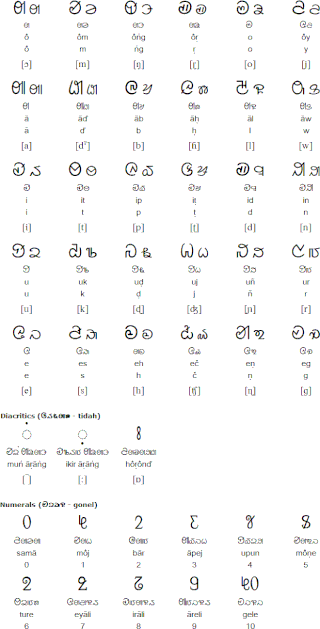
The Ol Onal, also known as also known as Bhumij Lipi or Bhumij Onal, is an alphabetic writing system for the Bhumij language. Ol Onal script was created between 1981 and 1992 by Ol Guru Mahendra Nath Sardar. Ol Onal script is used to write the Bhumij language in some parts of West Bengal, Jharkhand, Orissa, and Assam.
